The Biomechanics of Running
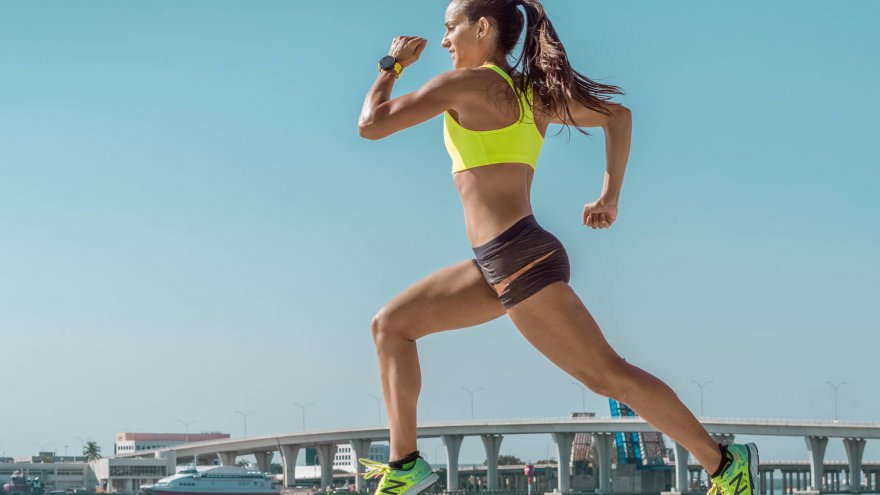
The act of running is known to be a natural movement. Even toddlers look like they learn to run before they can walk. A popular exercise at all ages, running is something everyone knows how to do. What many do not know how to do is run properly; and, yes, there is a proper way to run! Due to the poor mechanics of some runners, is the reason why many injuries occur—both overuse and accidental injuries. Numerous studies have been conducted on the different phases of running, and there are specific habits that are highly linked to injury risk. If you want to be a lifetime runner, it is beneficial to learn about the phases of running and the proper forms for each.
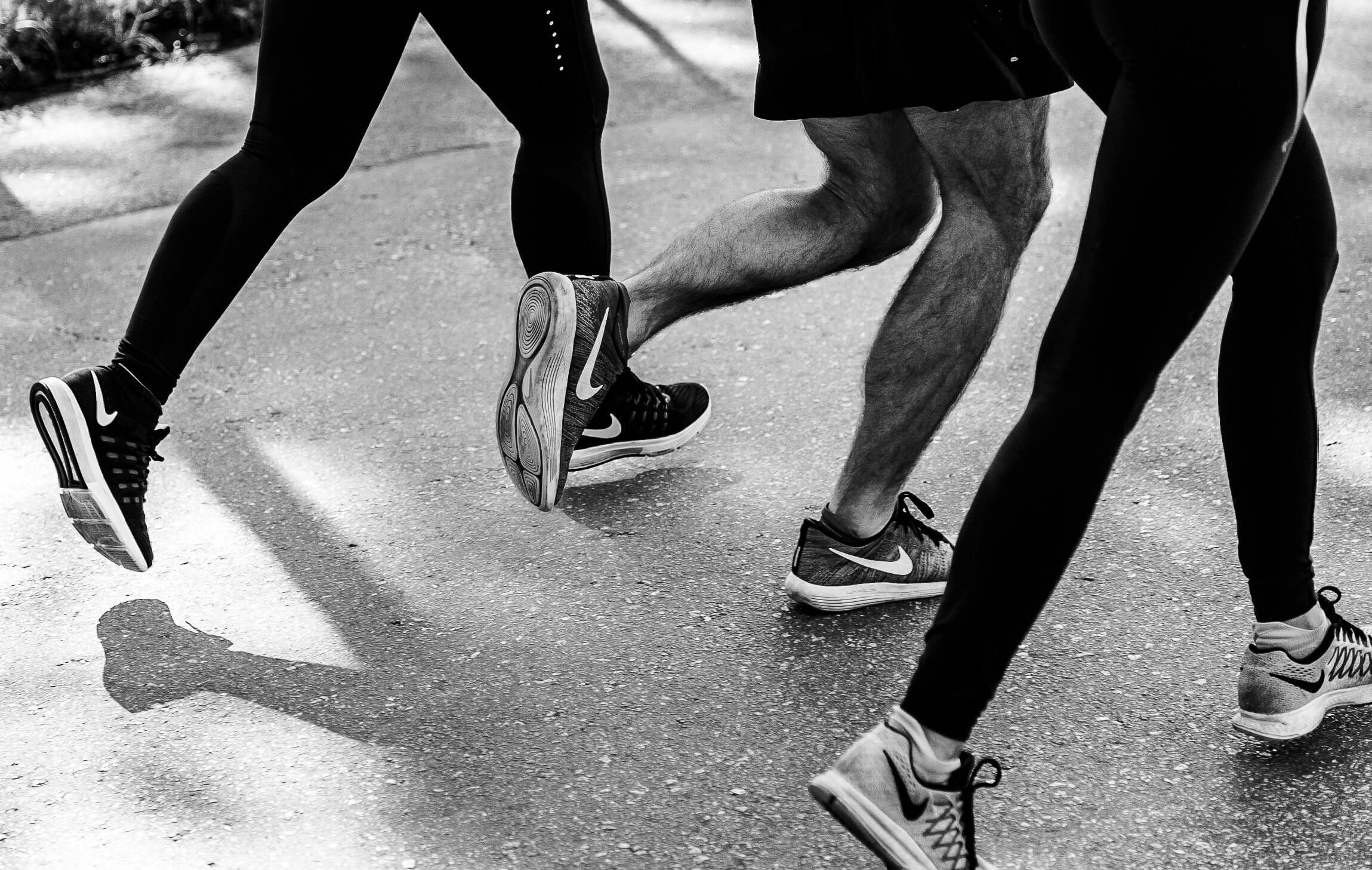
There are two main phases of the running cycle and they are described as the motions that occur on one leg. These two phases are broken up into different stages. The stance phase is basically when the foot is in contact with the ground, and the swing phase is when that same foot is in the air. These phases occur quickly during running even if you are running slow, so it is best to understand what is going on throughout each phase with each joint in the body to evaluate if you are running as efficiently and with the best form as possible to avoid injuries.
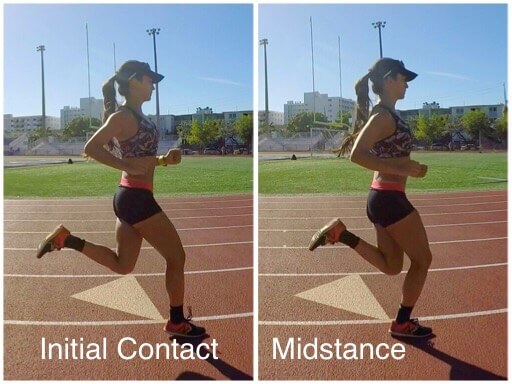
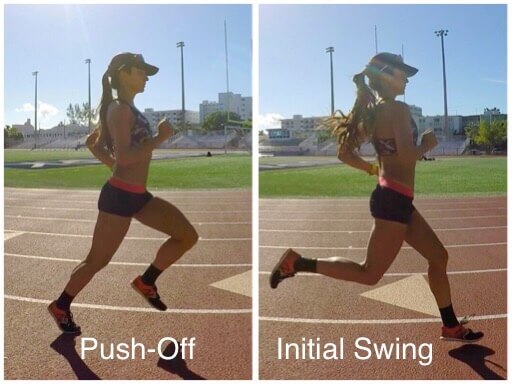
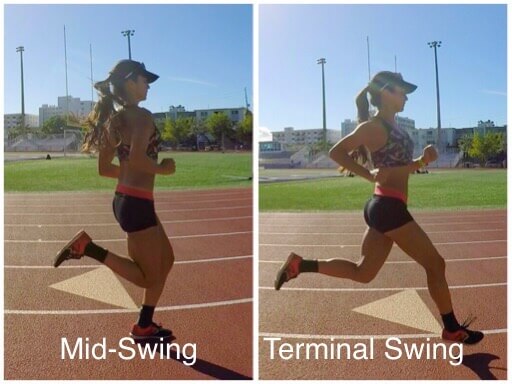
Stance Phase
Initial Contact
This is the point in the cycle where the foot hits the ground. It is known to be the most important since this is where the most impact occurs from the foot to the upper body. The amount of impact and the form in which your foot lands on the ground can be a true indicator of injury risk. The foot strike has recently been a topic of concern, as many believe landing on the heel promotes a higher risk for injury, but the research is inconclusive. The combination of many factors in the running cycle is what leads to injuries.
Initial contact requires at least 50 degrees of hip flexion and begins extending throughout the stance phase by the activity of the glutes and hamstrings. The quads fire eccentrically (meaning they control the knee bend on landing) but only for about the first 10% of the phase. They do not kick back in until during the swing phase. Common running injuries that occur from poor mechanics in the initial contact stage are knee dysfunction from the hard impact of heel striking and IT Band Syndrome from overstriding with too little knee flexion. Strengthening the quads is important for this stage to keep the knee stabilized and strong enough to withstand the impact of the foot strike. Keeping the IT band flexible with foam rolling and stretching is also important, as this will prevent stress at the knee or hip.
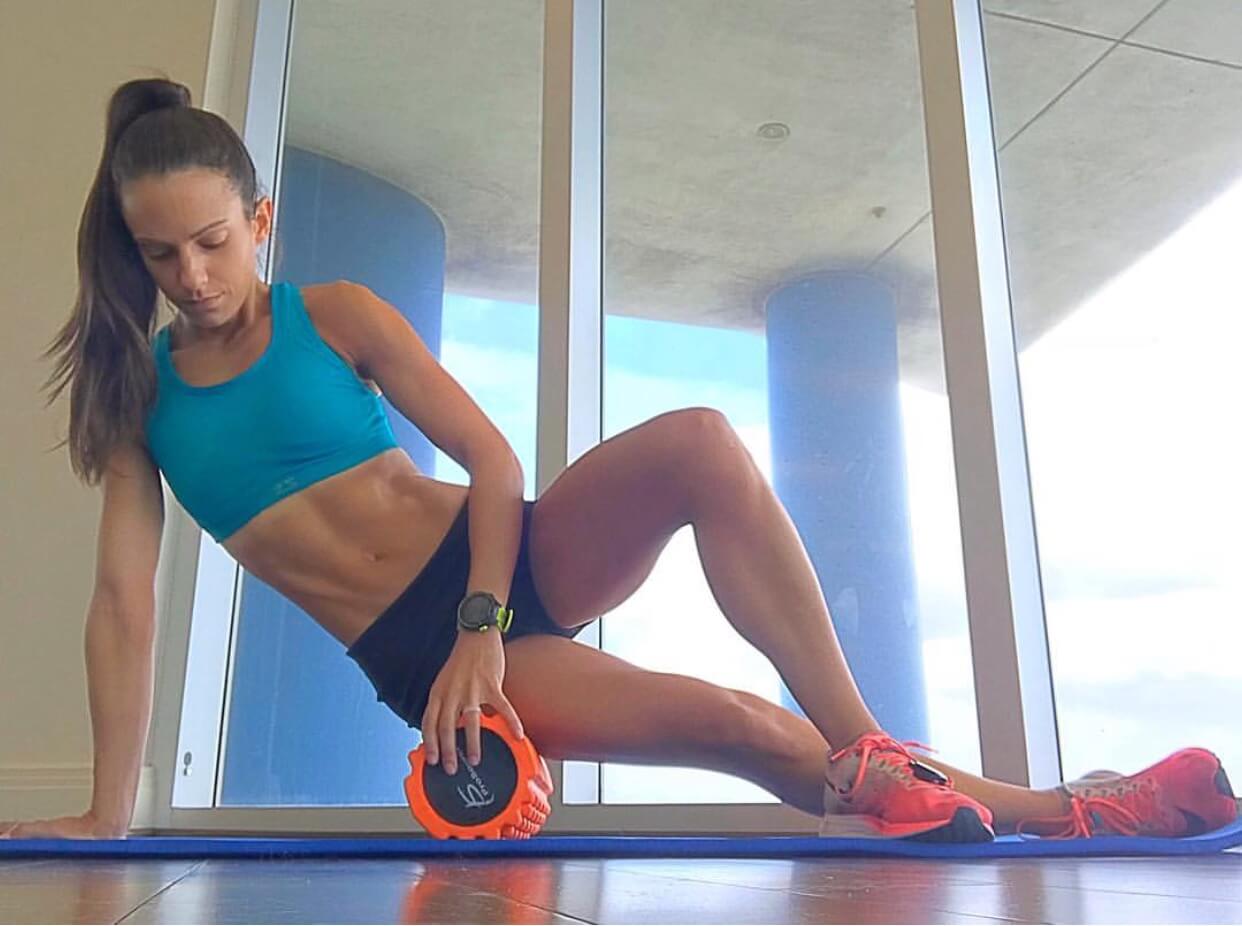
Absorption
This part of the stance phases occurs just after the foot hits the ground and is the moment where the muscles are required to break the landing. This force is absorbed through the knee and ankle joint as well as the foot, which rolls inward to stabilize the body. The strength of the muscles is extremely important at this stage as this impact can lead to stress fractures.
Midstance
This is the point where the stance leg is completely under the body. Strong core muscles do the job of stabilizing the pelvis during the stance phase to keep it in a neutral position, which helps to maintain the rest of the lower body aligned, therefore minimizing injuries. Runners should work on single leg balance exercises throughout training to mimic this phase in the running cycle. A noticeable hip drop during midstance signals weak hip abductors and core muscles, which can lead to IT band pain, stress in the knee, and fatigue during long runs.
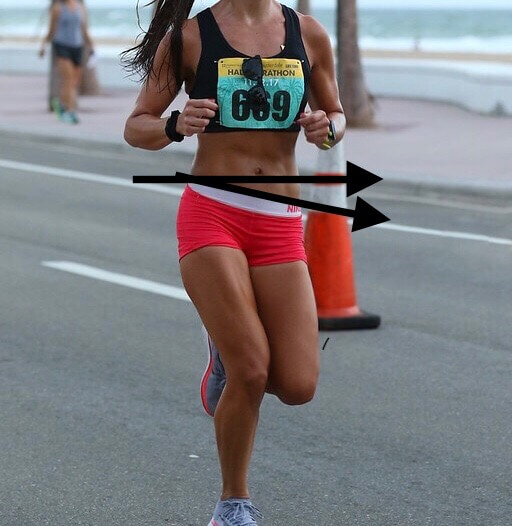
Propulsion
The most active muscles during this phase are the foot and ankle muscles as they create the force that pushes off, and the glutes, which drive the leg back to prepare for the swing phase. It is helpful to keep a consistent strengthening program for the Achilles tendon and calf muscles, as well as the small muscles of the foot since this is where the majority of the energy comes from that is required to push off the ground at this point.
Swing Phase
The initial swing stage begins just as the toe leaves the ground. The hamstrings are the active muscle group bending the knee to initiate the swing-through. Midswing is when the hip flexors become highly active to drive the leg forward underneath the body. Exercises that mimic this motion such as standing knee raises with a resistance band can help strengthen the hip flexors for this stage, which is the key to a quick turnover and faster paces. The terminal swing requires quad activation to extend the knee and prepare for the foot strike again. The swing phase makes up about 60% of the running cycle but has far less injury risk as compared to the stance phase since it does not involve any weight bearing.
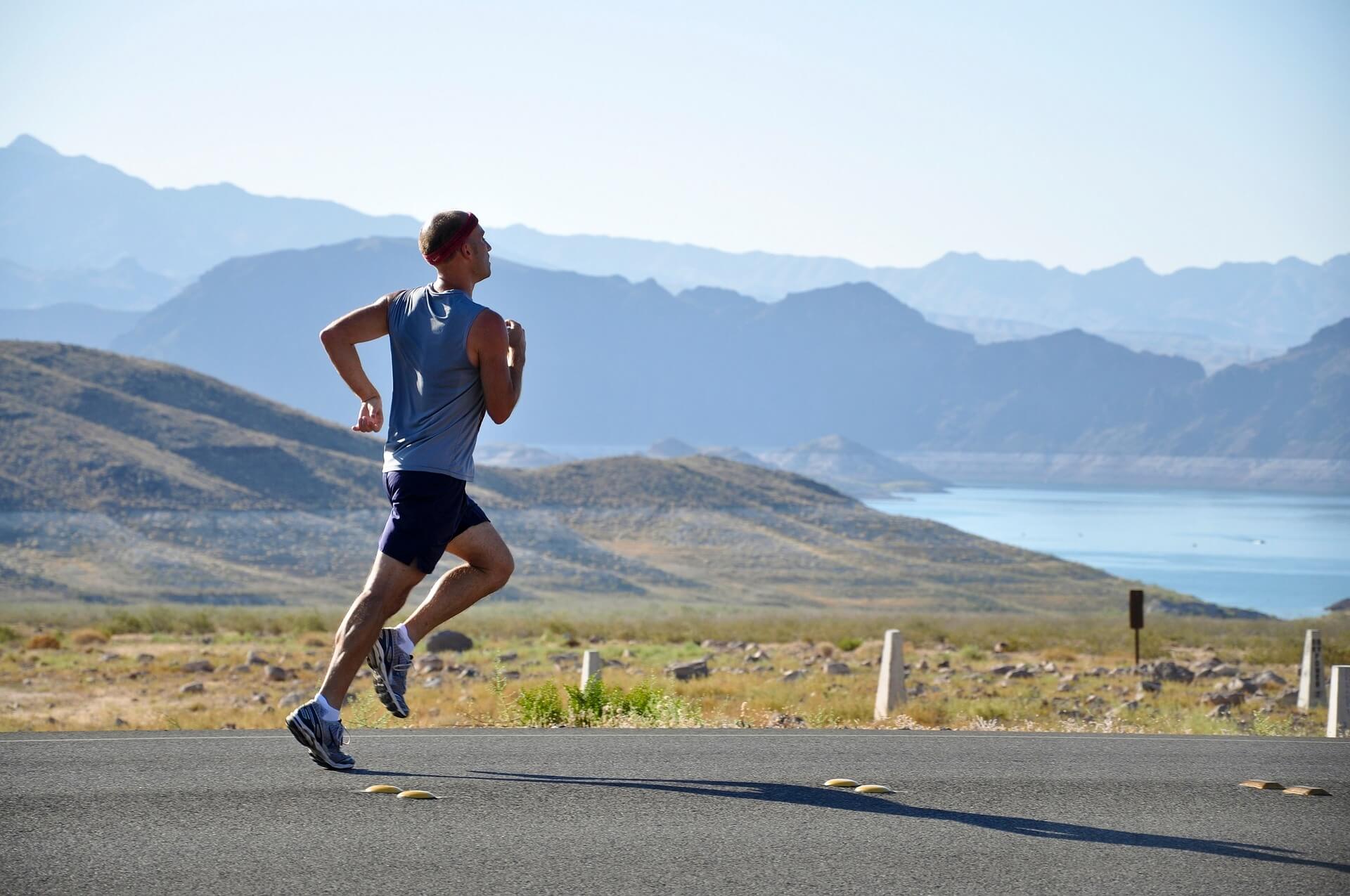
As you can see, every muscle in the lower body is active at different points in the cycle. What most runners forget is how involved the upper body is as well. The shoulders and arms are big components to speed as they are required during trunk rotation with each step. Fitting in upper body exercises such as bicep curls, push-ups, pull-ups, and rowing-type movements can truly make an impact on your running mechanics. Three days a week of strength training, as well as a few days of form drills, can help correct imbalances in the body and improve running posture. It is important to run with good form as it contributes to injury prevention and performance improvement.
Sources
Latest Articles
 Is Running on a Treadmill Easier Than Running Outside?Runners have their own preferences, whether it is treadmill running, running outside on the road, or exploring trails. So...
Is Running on a Treadmill Easier Than Running Outside?Runners have their own preferences, whether it is treadmill running, running outside on the road, or exploring trails. So... Is It OK to Use Trail Running Shoes on the Road?While trail running shoes can be used on roads, especially in situations where a runner encounters mixed terrains or pref...
Is It OK to Use Trail Running Shoes on the Road?While trail running shoes can be used on roads, especially in situations where a runner encounters mixed terrains or pref... How to Fix Sore Quads After Running?Rest, ice, gentle stretching, and over-the-counter pain relievers can help soothe sore quads after running. Also, ensure ...
How to Fix Sore Quads After Running?Rest, ice, gentle stretching, and over-the-counter pain relievers can help soothe sore quads after running. Also, ensure ... 10 Fruits With The Most Electrolytes to Replace Sports DrinksThese fruits are high in electrolytes such as potassium, magnesium, and calcium, essential for hydration, muscle function...
10 Fruits With The Most Electrolytes to Replace Sports DrinksThese fruits are high in electrolytes such as potassium, magnesium, and calcium, essential for hydration, muscle function...

